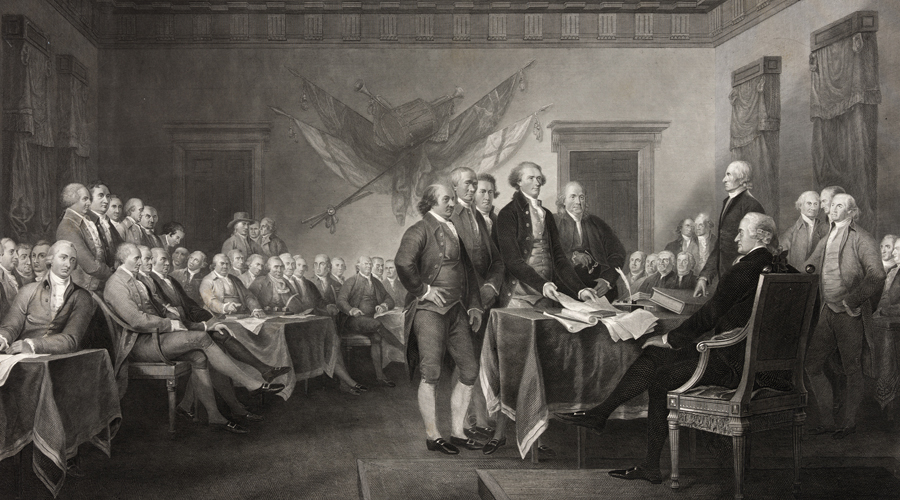Independence Day, the holiday that celebrates the adoption of the Declaration of Independence, is this week. Here are seven facts courtesy of an organization devoted to another famous document — the National Constitution Center in Philadelphia.
1. The Continental Congress officially declared its freedom from Britain on July 2, 1776. After voting on independence, the Continental Congress needed to finalize a document explaining the move to the public. It took two days to agree on the edits, which meant the Declaration of Independence was finally adopted July 4. At least one founding father, John Adams, thought July 2 would be marked as a national holiday for years to come.
2. Independence Day was almost forgettable. The declaration’s association with Independence Day came from a lapse of memory, according to historian Pauline Maier. In a 1997 book, she wrote that as the first anniversary of declaring freedom from the British approached, members of the Continental Congress had trouble recalling the exact date of the declaration. They finally remembered and decided July 4 made the most sense for celebrating independence.
3. The declaration suffered from a lack of early respect. Celebrating the signing of the declaration was the subject of a feud between the Federalists (led by Adams) and the Republicans (led by Thomas Jefferson). The declaration and its anniversary weren’t widely celebrated until the Federalists faded away from the political scene after 1812.
4. A select few signed both the declaration and the Constitution. The declaration isn’t the nation’s only famous document; the Constitution — created in 1787 — is pretty well known, too. Benjamin Franklin, America’s first Postmaster General, was among a handful of Colonial representatives who signed both historical documents. The others were George Read, Roger Sherman, Robert Morris, George Clymer and James Wilson.
5. The declaration and the Constitution were hidden during World War II. Both documents were packed up about two weeks after the Pearl Harbor attack. They were given a military escort to Fort Knox in Kentucky, where they remained until late 1944.
6. Hollywood got it right (sort of) about the declaration’s secret message. In the 2004 movie “National Treasure,” a secret message written on the back of the declaration is a key plot device. In reality, there is a visible message on the back that reads, “Original Declaration of Independence dated 4th July 1776.” While it’s not as dramatic as the movie, experts believe it was a label added at some point when the declaration was in storage.
7. One famous TV producer owns a copy of the declaration. Once the actual Declaration of Independence document was approved on July 4, it was sent to John Dunlap, a printer. About 200 copies of what is now known as “the Dunlap broadside” were printed, with John Hancock’s bold signature at the bottom. Today, 26 copies remain, including one that sitcom producer Norman Lear acquired in 2000 for $8.1 million.
